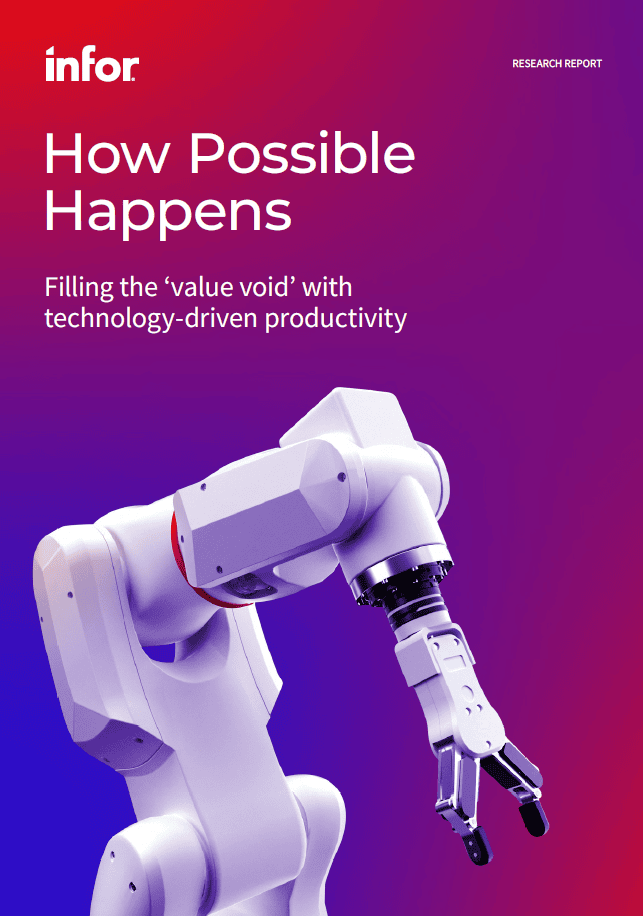If every machine is running, every order is delivered, and every metric looks fine… Why does it still feel like your factory could be doing more?
It’s a familiar question in manufacturing. Operations seem healthy on the surface: the production floor is active, schedules are met, and dashboards report strong performance. Yet something feels off — an unshakable sense that there’s still room to do better, faster, and smarter.
This invisible shortfall is often what experts call the “value void” — the space between a company’s potential and the results it actually achieves. It’s not about failure; it’s about untapped possibility. And in today’s data-rich environments, that void is often hidden behind the illusion of progress.
When Productivity Masks Efficiency
Technology Without Alignment
ERP Accuracy: The Quiet Cornerstone
At the center of operational clarity lies the ERP system — the digital backbone that synchronizes materials, schedules, costs, and compliance.
When ERP data is accurate, it doesn’t just record activity; it predicts performance. A single version of truth allows every department to act with confidence. The production manager, maintenance planner, and finance lead all see the same numbers, drawn from the same source, updated in real time. That shared visibility turns disconnected activity into coordinated progress.
Inaccurate ERP data, on the other hand, erodes trust. Teams start building workarounds (e.g. spreadsheets, manual reconciliations, or shadow systems) and suddenly, the organization is managing exceptions instead of performance.
Data precision becomes not a technical issue, but a business imperative. In manufacturing, accuracy is the first form of productivity.
Diagnose Before You Digitize
Before introducing new tools or automation, it’s worth asking: what is actually causing the gap?
Many organizations mistake motion for improvement. They invest in new platforms without fully understanding how current systems are used or misused.
A more effective approach is to map existing value chains and identify where decisions slow down, where data doesn’t flow, and where outcomes depend on assumption rather than evidence.
This diagnostic phase mirrors Business Process Reengineering (BPR), an approach that prioritizes redesigning how work happens before digitizing it. It remains one of the most reliable predictors of ERP and AI success because it forces clarity before complexity.
When processes are reengineered first, digital transformation stops being about replacing systems and starts being about realizing value.
That philosophy forms the foundation of ESS’ step-by-step approach to transformation. By focusing on one area at a time (whether a production line, a business unit, or a specific workflow) organizations build measurable gains while minimizing disruption. Progress becomes cumulative, not chaotic.
Bridging the Gap Between Potential and Reality
- Integrated Visibility: When ERP, supply chain, and production data are unified, performance becomes transparent. Bottlenecks no longer hide behind averages; they surface in real time and can be addressed immediately.
- Decision Speed: The time between identifying an issue and acting on it defines productivity. Real-time analytics shortens that delay, turning information into motion.
- Cultural Confidence: Technology only accelerates what people believe in. When employees trust their data, collaboration improves and decision-making gains momentum.
Why the Gap Persist
So why does the value void remain so persistent, even in well-equipped organizations?
Because systems that once enabled growth often become the very things that constrain it. Over time, processes adapt around the limitations of old software or manual interventions. Data becomes fragmented, and workarounds become routine.
These gaps aren’t catastrophic; they’re just subtle enough to stay invisible. But collectively, they hold back significant performance potential.
Breaking that pattern requires more than investment; it requires intentional integration. Every connection between systems, people, and processes brings the organization closer to a unified rhythm of work - the foundation of modern productivity.
Accuracy as a Competitive Edge
In an industry where margins are tight and supply chains unpredictable, accuracy is one of the few levers leaders can fully control.
An ERP system that reflects real-world conditions — current inventory, true capacity, live costs — turns uncertainty into strategy.
When every decision is based on precise, shared data, manufacturers gain more than efficiency; they gain confidence. And confidence compounds into competitiveness.
A Step-by-Step Path Forward
There’s no single fix for the value void, but there is a clear path: start where clarity is weakest and build outward.
Transformation doesn’t begin with new technology; it begins with seeing existing operations truthfully and using data to make improvement measurable.
When ERP accuracy, process alignment, and cultural commitment come together, productivity stops being a target and becomes a habit.
Or, as one insight from the How Possible Happens research puts it: value happens when technology, process, and people move together.
Every manufacturer lives with some degree of value void: The quiet distance between what’s working and what’s truly possible.
Closing that gap isn’t about chasing hype or rushing to automate. It’s about uncovering the value that’s already there and bringing it to the surface, one system, one process, one decision at a time.
To explore this idea in depth, the research report “How Possible Happens”dives into how technology-driven productivity and data accuracy can help manufacturers turn potential into measurable performance.
Author: Essential Software Solutions
Published Date: October 9, 2025

Infor's latest research reveals the gap between digital transformation and its value for manufacturers. The research shows productive organizations' practices and their solution to close this gap.











